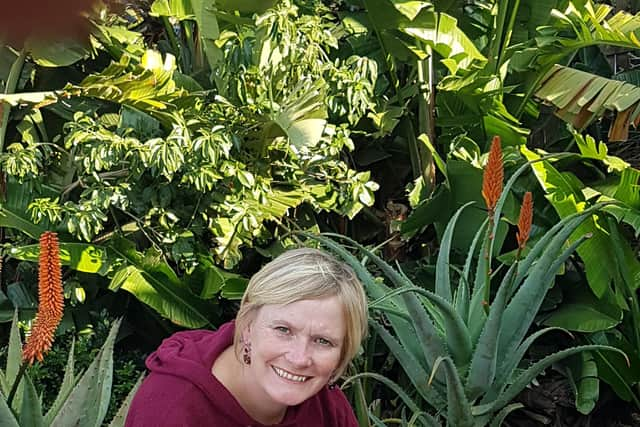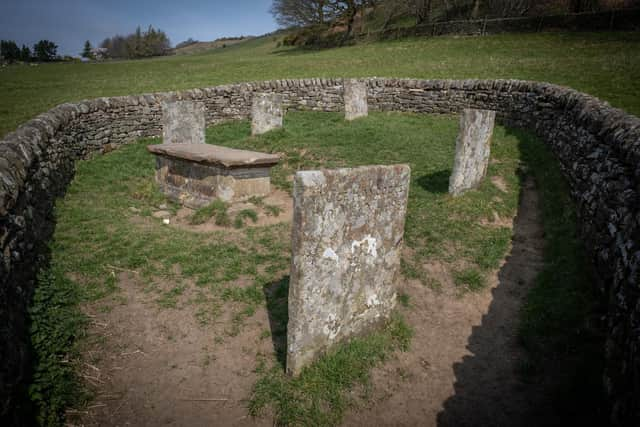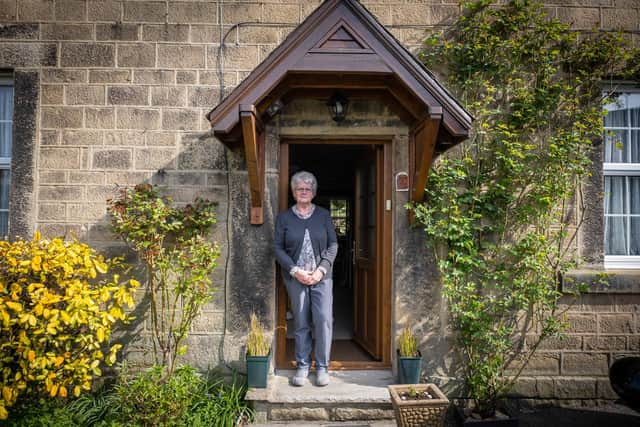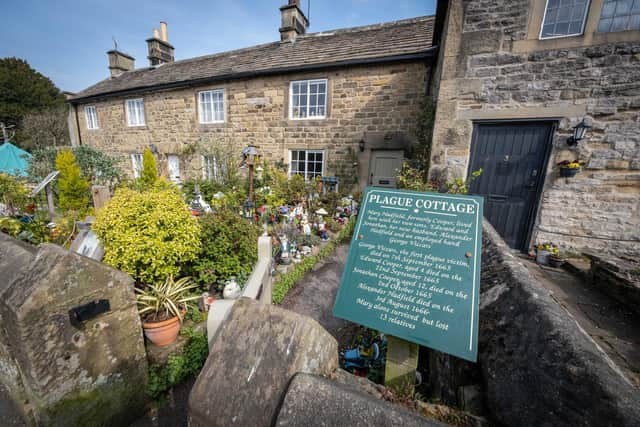Sheffield writer's novel depicts Eyam plague story that resonated around the world during Covid-19 pandemic
and live on Freeview channel 276
Given Lives by Anna Jensen tells the story of the Peak District village which voluntarily isolated itself in 1666 to stop the spread of the plague further afield. It is told from the point of view of a young woman, Kitty Allenby, who is visiting her uncle and aunt when fleas in a parcel of cloth sent from London to a local tailor brings death to the village, where 260 people died.
The Rev William Mompesson asked villagers to stay put with the support of his predecessor and rival, Thomas Stanley.
Advertisement
Hide AdAdvertisement
Hide AdThe story looks at whether the two men would be able to put aside their deep mistrust of one another for the sake of the people they are called to serve and how the villagers would respond.
Anna wrote: “Based on true events, Given Lives is a story of bravery and sacrifice, of love that laid itself down for the sake of others. It is a whisper through time to each of us confronted by a modern plague, the global Covid-19 pandemic. Will we attune our ears and listen?”
Joan Plant, a descendant of a survivor, has endorsed the novel. She said: “My ninth great aunt and ancestor, Margaret Blackwell, is part of this wonderful novel and as a family survivor of this dreadful plague disease, I felt privileged to be asked to read Anna’s novel.
“The story unfolds as Kitty comes to Eyam to celebrate the annual Wakes Week and becomes isolated with the villagers as they try to contain the disease.
Advertisement
Hide AdAdvertisement
Hide Ad"It captures the real depth of sacrificial love, care and compassion and their heroism during the Plague in 1665/66.


“The trust and hope the families had in God to bring them through this tragic time is a real testament to their fortitude as Kitty constantly, with her family, looks forward to a brighter and happier future.
“A great read and thanks to Anna for her factual insight and passion for our history.”
Anna said: “I grew up in Sheffield and visited Eyam lots of times growing up and I’ve been back since. I now live in South Africa and took my husband there. It’s just a story that’s always gripped me.
Advertisement
Hide AdAdvertisement
Hide Ad“At the start of Covid last year, Eyam suddenly was quoted in newspapers and article around the world. Originally I was going to write a non-fiction piece. The more I started doing that, the more I realised fiction would work really well.


“I just wanted to tell the story of the individuals going about their business and doi ng what they did and the effect of the plague on their communities. Here we are still asking about them 350 years later.
"They are an example to us centuries later.”
Anna added: “As individuals, we got about our lives and do our daily thing. Do we realise how much of an impact that has, for centuries to come perhaps?”
She first heard the Eyam story when growing up in Norfolk Road. The family later moved to Whirlowdale and she went on school trips to the village as a pupil at Hunters Bar Primary School.


Advertisement
Hide AdAdvertisement
Hide AdAnna met South African husband Craig as a student at Anglia Polytechnic in Cambridge and the couple moved to his home country. At present Durban is in its third wave of coronavirus and only a small part of the population is vaccinated.
As she was writing her book in Durban during the pandemic, Anna had to rely on online sources for her research, including the Eyam museum website www.eyam-museum.org.uk, and the village website, www.eyamvillage.org.uk, as well as a 19th-century account by William Wood (places.wishful-thinking.org.uk/DBY/Eyam/History/index.html) that she found fascinating.
Anna said: “I also did the NaNoWriMo writing challenge, where you have to write 50,000 words over the month of November. In October I did the research and then the challenge and completed 50,000 words. I then put it to one side until February and worked on it until August, finishing and editing.”
She said: “I created a fictional character called Kitty and inserted her into the story by having her stay with one of the families. On the museum website they’ve got the parish register, where you can look at who survived and died and picked the Fox family. It’s told from her point of view.
Advertisement
Hide AdAdvertisement
Hide Ad“I also told it from the point of view of Rev Mompesson. Officially, Thomas Stanley and William Mompesson were bitter enemies. Thomas Stanley wasn’t supposed to still be living in the village with the Reformation Act having come in.
"It fascinated me by how he was willing to work with his predecessor, working with someone he didn’t theologically agree with. They put those differences aside to work for the community.”


Anna said she has tried to keep the story as accurate as possible, based on the various accounts she read. “I’ve created relationships between people. In a community like that, they would have known each other well.”
She added: “I wanted to highlight Catherine Mompesson’s bravery. She sent her kids away and decided to stay in Eyam. I explored that a little bit.”
Advertisement
Hide AdAdvertisement
Hide AdCatherine sadly died from the plague and never saw her children again.
Anna, who is an active Christian, included some readings from the Book of Common Prayer that would have been used at different times of the year, including in William Mompesson’s sermons.
“For me the faith story is really important,” she said. “I struggle to write just for the sake of writing. I do want to find a bigger meaning. I think in particular with Eyam the faith story itself was a very big part of what happened and how it really was the two church leaders that persuaded people.
"It’s remarkable how nobody ran away. I find that very interesting and I think that for me what I wanted to do was explore what kinds of things they would have said.
Advertisement
Hide AdAdvertisement
Hide Ad"Obviously at that time plague was seen as a punishment but it doesn’t seem to come across with the way that they dealt with the situation and the way it worked out. It doesn’t seem to have been about the evil people of Eyam.
"The way I wrote it really brought out the faith element and it’s inspiring even for people that don’t have faith. To say how someone’s faith affects their behaviour and how they act in a certain way is inspiring to anybody.”
Clearly there are also lessons for today.
"We’re all struggling with how we deal with this pandemic. We’ve seen community kindness but people who are not being so kind. People who have read the book have said it’s just a timely message. We should be kind for the sake of others in the community.
“Everyone is actually just doing their best with limited understanding. In Eyam they had no idea of how plague was transmitted. At the start of Covid, did we have any idea of what was going on? It’s easy to look back and say we did that wrong. At the time people were just doing their best with what was in front of them.”
Advertisement
Hide AdAdvertisement
Hide AdGiven Lives (£7.99 paperback, £2.99 Kindle) is available on Amazon and St Lawrence Church in Eyam has copies on sale. Anna has a website at www.annajensen.co.uk